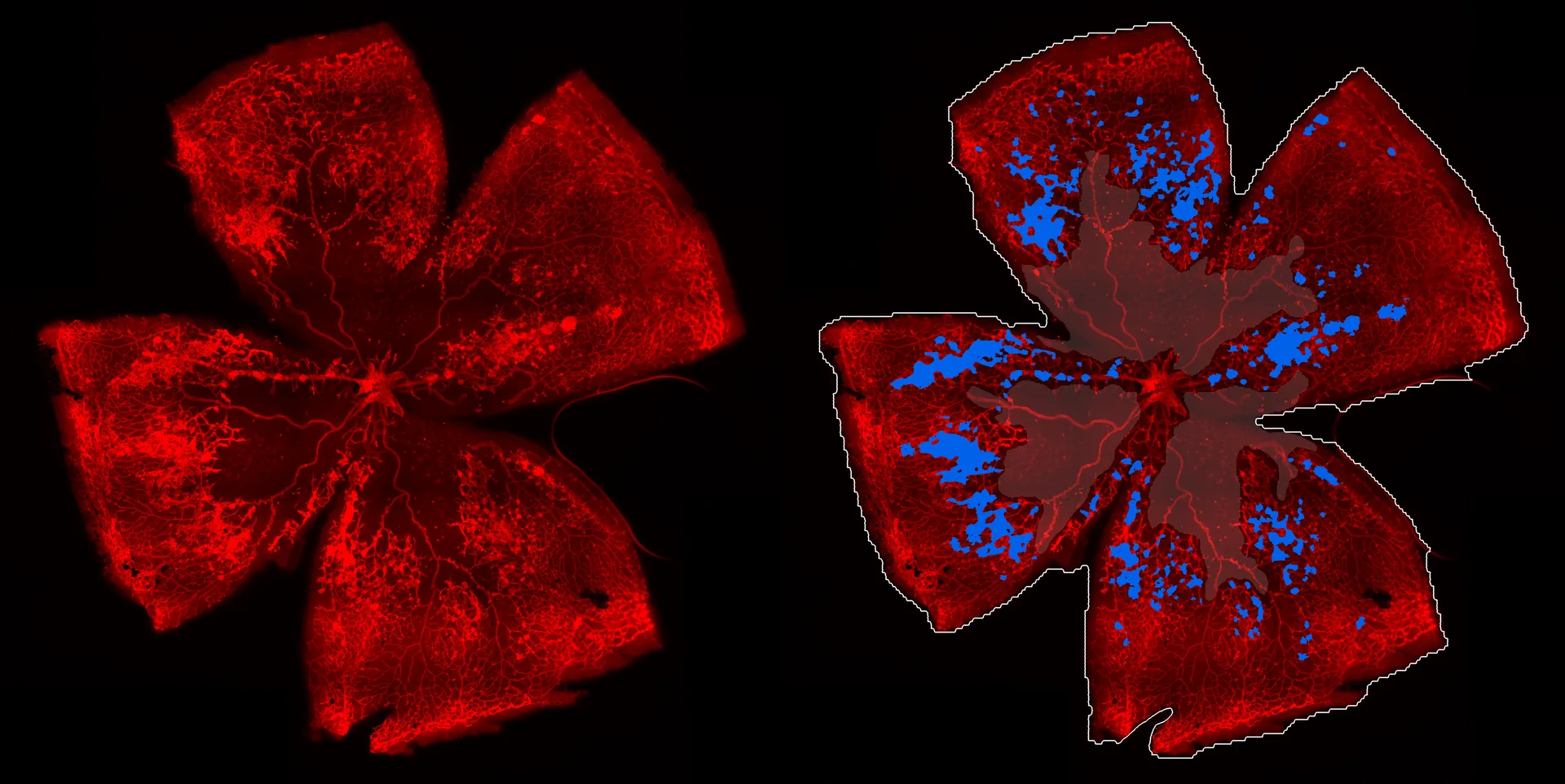ARVO 2025 presentation: Phosphate-buffered saline administered intravitreally at P12 blocks neovascularization in the mouse oxygen-induced retinopathy model


Male and female C57BL/6JRj mice were exposed to 75% oxygen (BioSpherix ProOx) from postnatal day 7 (P7) for a period of 5 days. On P12, the mice were returned to normoxic conditions and received IVT injections of either PBS or aflibercept in the right eye on P12, P13, or P14 (n = 7-9 eyes/group). The left eye was left untreated as a contralateral control. At P17, retinal flat mounts were collected and stained with Isolectin B4. Microscopic images of the whole retina were then analyzed for neovascular (NV) and avascular (AVA) areas using a proprietary AI-based algorithm. The results were analyzed with Mann-Whitney test or unpaired t-test separately at each time point.
The effect of PBS on NV and AVA areas was similar to aflibercept when administered at P12. At later time points, aflibercept reduced NV by 83% (P13, P<0.001) and by 65 % (P14, P<0.01) when compared to PBS, whereas AVA remained similar between groups. When compared to untreated eyes, PBS significantly reduced NV at P12, and the size of AVA area at P12 and P13 (P≤0.001). No significant group differences were evident at P14.
Our findings show significant anti-angiogenic effect of PBS when injected at P12. However, PBS administered at P13 or P14 did not block neovascularization, which was successfully inhibited by aflibercept. These results suggest that P12 is not an optimal timepoint for IVT treatment when PBS is used as a vehicle. Further studies are needed to explore if similar effect at P12 is seen with other vehicles or neutral antibody controls.
Vähätupa Maria, Lappeteläinen Birgitta, Jääskeläinen Niina, Tenhunen Anni, Ekolle Xavier, Vergun Olga, Haapaniemi Anne Mari, Kolehmainen Anni, Koponen Anna Mari, Partanen Päivi, Kalesnykas Giedrius
Check out our latest news and activities
All News
Copyright: Experimentica Ltd. 2025